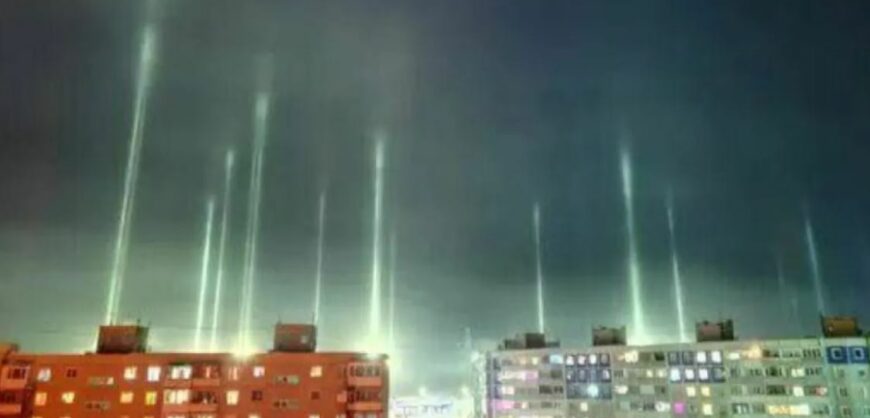The mass firing of laser beams that took place in the last few days in the city of Belgorod on the Ukrainian borders, 70 km from Kharkiv and in other regions of Russia had social media users and experts baffled as to their origin and explanation.
Were they the product of the advanced Russian military weapon known as “Peresvet”, a laser-firing system targetting space satellites? Some have claimed this system might have been used against Elon’s “Starlink” satellite system which went down “blinding” the Ukrainian forces and forcing them to suffer heavy losses.
The columns of light recorded in the sky, mainly in the city of Belgorod, caused much debate in Russia, with some talking of a test of a laser weapon for satellites and others of a natural phenomenon. The discussion started when on Tuesday (4/10) and Thursday (5/10) a series of photos were published on social media by residents of the Russian city located 25 km north of the border with Ukraine.
What added fuel to the fire was the fact that the source of the light was not visible, with buildings covering the lower part of the light beam that disappeared into the horizon.
В небе над Белгородом заметили жёлтое свечение
Эффект линзы ? Или НАТО ? #нато #белгород #россия #Украина pic.twitter.com/keLpcWJPhg
— Ququ Kodein🇺🇦🇭🇺 (@ququ_kodein) October 4, 2022
This theory was partially adopted by the Russian newspaper Komsomolskaya Pravda, which posted a video on YouTube with the caption “test of a top-secret weapon or just a natural phenomenon? The people of Belgorod are confused.”
More ardent supporters of this theory are the editors of the newspaper Moskovskij Komsomolets who wrote in an article in its online edition that the Russian army “used the last weapons of the Russian republic” adding that “due to the circumstances we will never know but there are many who they saw the brightness in the sky.”
Peresvet is a system that Vladimir Putin publicly referred to in 2018 and which is said to have the ability to “blind” satellites up to 1,500km away.
Other social media users noted, however, that it would be difficult to target moving satellites with a beam emitted from a fixed point and directed in a straight line.
A second, therefore, a version developed is that the source of the light column was a natural phenomenon called a light column or light pillar.
The Russian medium RBC cited a weather expert who said “these light columns observed in the sky are an optical phenomenon in the atmosphere to which we have given the name light column. It is a phenomenon created by the reflection of light in frozen crystals.” As Newsweek notes in its analysis following the Russian accounts, this phenomenon can be recorded when the sun or moon is low on the horizon either at dawn or at sunset. Another possible contributing factor is greenhouse gases, but these are not recorded in Belgorod.
The professor at the Institute of Climate and Atmospheric Science at the University of Leeds, Ken Carslaw, who was asked by Newsweek, expressed his support for the natural phenomenon. “Such images are produced when clouds of ice crystals are aligned horizontally to act as a mirror in the same direction above a light source,” said the British professor. “For that to happen we need ice. The temperatures in the city of Belgorod are 11 degrees Celsius which means that these clouds must be within 1km from the ground, ” he added.
also read
Metropolitan Cleopas of Sweden Visits Boston as a Guest Speaker (photos)







































